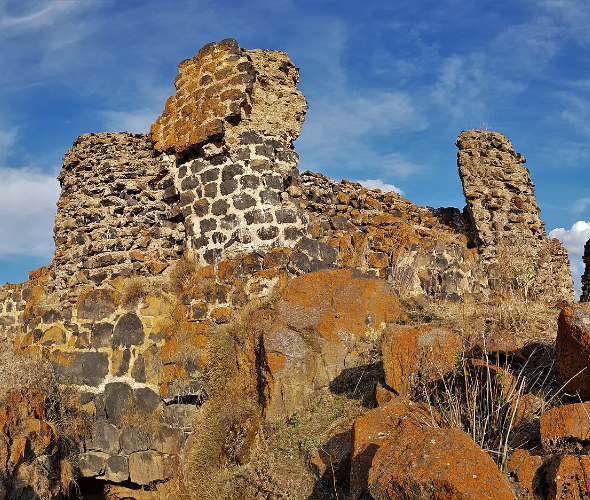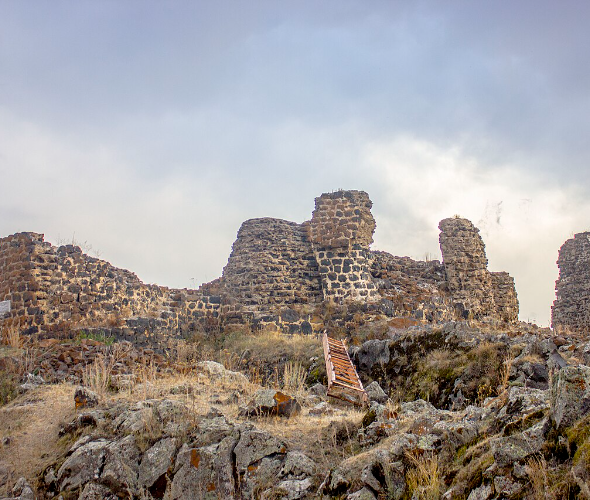Berdkunk Fortress
Region
Gegharkunik
Distance from Yerevan
91.6 km
Type
Fortress/Castle
Berdkunk Fortress dates back to ancient times, specifically to the 2nd–1st millennia BC. The fortress is almost inaccessible from all directions, except from the eastern side near Berdkunk village, which has now merged with the fortress ruins. The fortress is a multi-layered structure, which was rebuilt and reached its peak during the medieval period. It is surrounded almost entirely by rock-cut trenches with a total length of about 275 meters. During the Middle Ages, a new fortress was built over the ruins of the Cyclopean fortress, due to its strategically dominant position. This later fortress was called the ""White Fortress"", and is also known by the names Aghkala and Ishkhanats Berd. It was constructed using dressed basalt and lime mortar. The central structures of the medieval White Fortress are relatively well-preserved, with defensive walls still standing. The southern tower of the citadel reaches a height of up to 8 meters. Numerous ruins of buildings have survived, especially in the eastern part near the lake, where some walls reach up to 1.5 meters high. Berdkunk was once a center of trade and craftsmanship, where goods from Gegharkunik and surrounding regions were sold. It was known for its shops, stalls, and inns. The fortress was destroyed in the 13th–14th centuries due to Tatar-Mongol invasions.

Interesting
facts about Berdkunk Fortress


Facts
Weather in Gegharkunik
The high season in Armenia lasts for a long time due to the pleasant climate conditions. Warm days in Armenia start in March and last until late autumn; winter is usually snowless and not long. The high precipitation season is variable. The tourist season for Aghkala Castle depends on the weather conditions.












